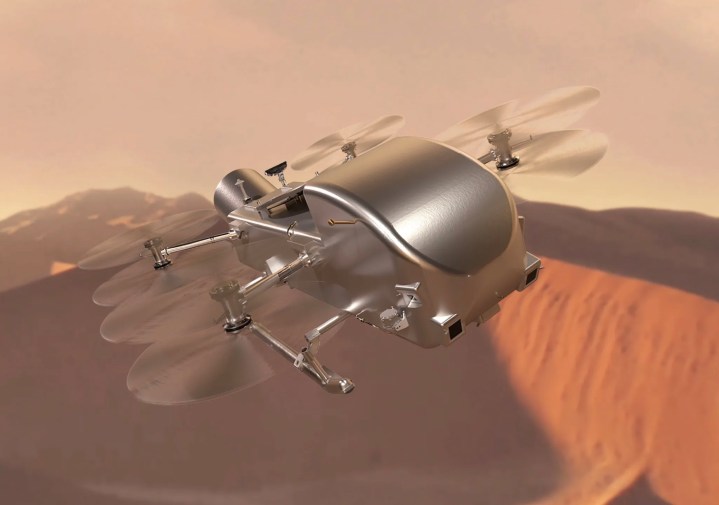
NASA’s Mars helicopter mission is now well and truly over, but following in its footsteps is an even more complex flying machine that’s heading for Saturn’s largest moon.
The space agency on Tuesday gave the green light to the Dragonfly drone mission to Titan. The announcement means the design of the eight-rotor aircraft can now move toward completion, followed by construction and a testing regime to confirm the operability of the machine and its science instruments.
“Dragonfly is a spectacular science mission with broad community interest, and we are excited to take the next steps,” said Nicky Fox, associate administrator of NASA’s Science Mission Directorate. “Exploring Titan will push the boundaries of what we can do with rotorcraft outside of Earth.”
Titan’s dense, calm atmosphere and low gravity make it highly suitable for rotorcraft like Dragonfly, which will be the size of a small car when built. “In under an hour, Dragonfly will cover tens of miles or kilometers, farther than any planetary rover has traveled,” NASA said. “With one hop per full Titan day (16 Earth days), the rotorcraft will travel from its initial landing site to cover areas several hundred kilometers away during the planned two-year mission.”
NASA added that despite its unique ability to fly, the machine would spend most of its time on Titan’s surface conducting science measurements, with gathered data beamed back to scientists on Earth.
If preparations proceed as planned, Dragonfly will launch atop a rocket in 2028 and arrive at the organic-rich Titan moon in 2034. Once deployed, it’ll fly between dozens of scientifically interesting locations in a search for evidence of prebiotic chemical processes common on Titan and also on the early Earth before life developed. Scientists are therefore hoping that the mission can help them to learn more about how life started on our planet, among other goals.
Editors' Recommendations
- Watch how NASA plans to land a car-sized drone on Titan
- How NASA’s Dragonfly mission will assess Titan for habitability
- The Dragonfly rotorcraft will search Saturn’s moon Titan for signs of life
- NASA’s eight-rotor Dragonfly drone is heading to Saturn’s largest moon


